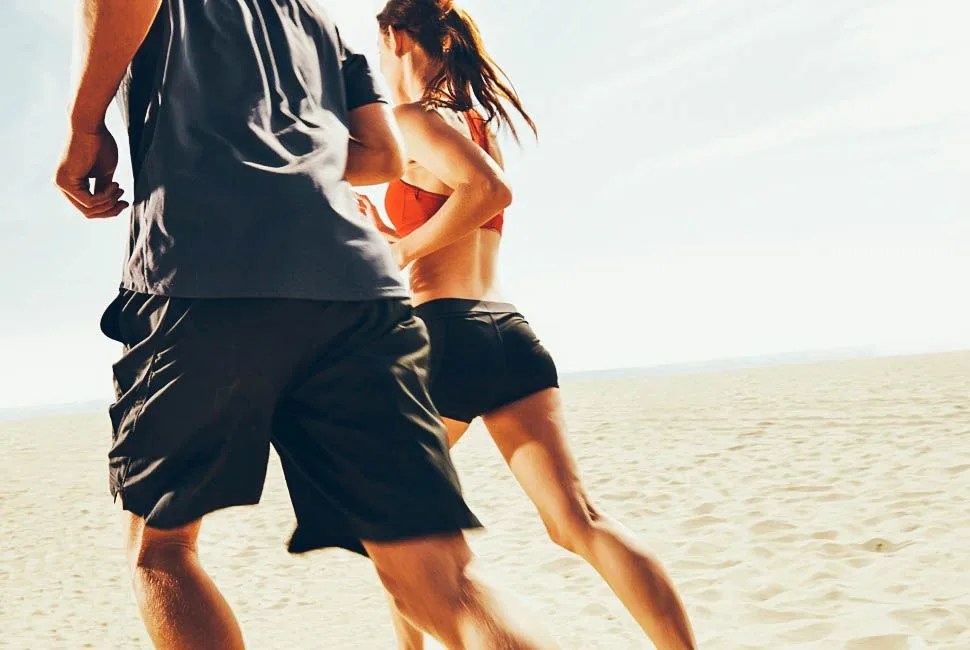The scene is permanently written in the memory of anyone whose formative years fell between 1989 and 1999: beaches, bodies, butts, helicopters, speedboats, lots of jumping off things, someone dive-tackling another person off a jet-ski, three or more additional instances of locomotion, Peter Cetera’s “Save Me” playing throughout, and then at the heart of the opening credits, Mitch Buchannon running like hell across the sand. Eddie Kramer is next, followed by Shauni McClean. Baywatch is one of television’s most iconic series about lifeguards — it may be the only one, in fact — and beneath some of its admittedly outlandish plot lines (disgruntled gambler turns into high-seas pirate), there’s an important piece of fact: real open-water lifeguards are incredibly fit individuals, and looking at their fitness regimens to inform your own is a solid bet.
Though the job of a lifeguard involves swimming, paddling and rowing, running is critical: When lifeguards see a swimmer in distress, they’re off the tower and in the sand for a full sprint to the water — fast, barefoot and without a warm-up. So it stands to reason that running on the beach would be a direct path to a good tan and a hard body, right? It’s certainly convenient, if you’re already near the shore for vacation, but it’s more complicated than just kicking off your shoes and running. “I think, actually, there are more cons than pros”, Peter Wernicki says. He’s a Vero Beach-based orthopedic surgeon and medical adviser to the United States Lifesaving Association, America’s nonprofit association for beach lifeguards and open-water rescuers. The real-life Baywatch stars.
Lifeguards are incredibly fit individuals, and looking at their fitness regimens to inform your own is a solid bet.
On the positive side, there’s the fairly intuitive argument that working out in the sand is more difficult than running on pavement and therefore an effective workout. That turns out to be true. “You’ll really work the quads and calves a lot harder trying to push out of the sand”, Wernicki says. A study published in the Journal of Experimental Biology in 1998, “Mechanics and Energetics of Human Locomotion on Sand,” found that running on sand requires 1.15 times as much mechanical work and 1.6 times as much energy expenditure than running on a hard surface at the same speed. In other words, for a high-intensity sprint workout or for a cardio workout with more bang for your buck, sand running is a good idea.
But there are some drawbacks. “When you run on the beach your heel sinks in deeper than your forefoot typically, so that causes extra stress on the back of the foot and leg”, Wernicki says. “I see a lot of cases of plantar fasciitis; I see a lot of cases of achilles tendonitis; I see a lot of strained or torn muscles in the calf or gastroc (the larger of the two muscles that make up the calf).” If you’re barefoot, there’s also the potential to injure yourself on shells, rocks and other debris on the beach. A strained calf and a foot-full of cuts doesn’t sound like a nice day at the beach.
So should you just resign yourself to a vacation of actual relaxation? Not exactly. Wernicki suggests running on the beach with shoes and running on the harder, wet sand at low tide. Or just leave the running shoes behind and take advantage of your location by going for a swim or getting on a stand-up paddleboard, both of which provide a full-body workout. And if you decide to run barefoot in the sand anyway, remember that it’s like all barefoot running: the risk of injury is higher for those who jump right in than for those who ease into it and make it a regular part of an exercise regimen. And as for Baywatch, the recommended dose is once a day, all summer long.

